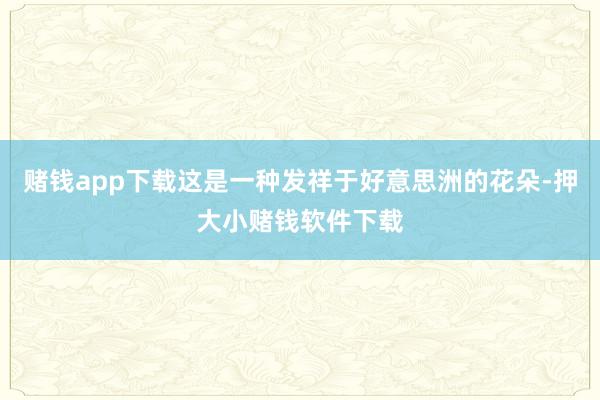发布日期:2025-11-03 07:22 点击次数:58


今天赌钱app下载,跟大家共享一些英文中跟“花”关系的抒发。
“着花”英文怎么说?
大家皆知谈花的英文是flower,但着花可千万别直译为:open flower,正确的抒发是Flowers open.
其实,flower也不错平直算作动词使用,就示意着花。
释义:to produce flowers
Several of these rhododendronswill flowerthis year for the first time.
这些杜鹃花有些将在本年首度着花。
除了flower,着花的英文还不错说 bloom;blossom
伸开剩余94%bloom 释义:
When a plant or tree blooms, it produces flowers. When a flower blooms, it opens.
Most roses will begin to bloom from late May.
大大宗玫瑰从五月末开动着花。
These plants bloom in spring.
这些植物在春天着花。
in (full) bloom 鲜花绽开
The daffodils were in full bloom.
水仙花绽开了。
blossom和bloom的用法调换,但bloom主要指植物开的花及着花的景况;而blossom主要指树或灌木的花。
Rain begins to fall and peach trees blossom.
开动下雨了,桃树也着花了。
The trees are in blossom.
树上鲜花绽开。
来跟大家共享三个比拟敬爱的鲜花英文名
kiss-me-quick
一种绰号,名叫三色堇,也不错简称为kiss-me.
The extract of kiss-me-quick flower is packed with vitamins and antioxidants that can greatly upgrade your beauty routine.
三色堇的提真金不怕火物富含维他命和抗氧化物,可大大增强日常好意思容边界。
China rose不是中国玫瑰
China rose,有技艺也写成Chinese rose. 天然看起来带rose,但它的敬爱并不是中国玫瑰,而是指月季花。
为什么异邦东谈主会用“rose”来形色月季花呢?
月季发祥于中国,在18世纪末的技艺传入欧洲。欧洲东谈主用中国月季和许多其他品种的花进行培育变种,不错说中国月季是国际许多耕种花圃玫瑰的祖宗。而月季和玫瑰皆属于蔷薇科植物,异邦东谈主就慢慢开动用“China rose”来指代月季。
China roses were often used in breeding new varieties.
月季常用于新品种的选育。
American Beauty 红蔷薇
还有一个雷同的抒发American Beauty,它其实说的是红蔷薇。这是一种发祥于好意思洲的花朵,会如期开紫红色的花。
临了,再跟大家共享一些常见花的英文名过甚花语:
1. CARNATION [kɑr'neʃən]
康乃馨
There are two etymologies for carnation, a term found in English in the early 1500s. According to one, carnation may be a corruption of coronation, perhaps because the flower’s toothed petals resembled crowns or because the flowers were worn, crown-like, as garlands. The second etymology comes from the flower’s original color, and roots carnation in the Middle French carnation, “pink complexion,” from the Latin root caro, “flesh,” source of less delicate words like carnal and carnage.
Carnation(康乃馨)在16世纪初期出当今英语中,对于carnation的词源有两种说法。其中一种说法以为,carnation可能是coronation(加冕礼)的变体,因为康乃馨的锯齿状花瓣大致王冠,又或者是因为东谈主们把这种花当花冠捎带。第二种说法与康乃馨的原色磋议,以为carnation这个名字来自中古法语carnation(粉红的气色),这个单词的拉丁语词根是caro(肉欲),与carnal(肉欲的)、carnage(大屠杀)等不太顺耳的单词词根调换。
2. CHRYSANTHEMUM [krɪ'sænθəməm]
菊花
The word chrysanthemum, emerging in English in the late 1500s, comes from the Greek krysanthemon, meaning “gold flower.” The first component, krysos (“gold”), shows up in the biological term chrysalis. The second, anthos (“flower”), appears in anthology, literally “a collection of flowers,” first used for a compilation of small poems in the early 1600s.
Chrysanthemum在16世纪末期传入英语,这个单词源于希腊语krysanthemon(金色的花朵)。第一个构成部分krysos意为“金色的”,是形色蝶蛹的生物学术语。Anthos示意“花朵”,它亦然anthology的词根。Anthology意为 “鲜花大全”,在17世纪初期时,这个单词用来示意短诗集。
3. DAISY[ˈdeɪzi]
雏菊
The word daisy has deep roots in the English language. As attested to in some of English’s earliest records, daisy comes from the Old English phrase dægesege: the “day’s eye,” as the flower’s white petals close at dusk and open at dawn, like the eye of the day as it sleeps and wakes.
Daisy是一个地贞洁谈的英语单词。阐明一些英语关系的早期纪录,Daisy来自于古英语短语dægesege,敬爱是“日之眼”。白色的雏菊清早花开,薄暮花谢,就像是每一天的眼睛相通睡去醒来。
4. ANEMONE [ə'nɛməni]
银莲花
The anemone is also known as the windflower. Indeed, the word anemone, first attested in English in the mid-1500s, probably comes from a Greek word literally meaning “daughter of the wind.” It's said that the brightly colored petals of this flower only opened when the wind blew. Sea anemones took their names in the late 1700s on their likeness to the flowers.
Anemone(银莲花)也被称为风之花。事实上,anemone是在16世纪中世初次出当今英语中的,它可能发祥于一个希腊单词,敬爱是“风的男儿”。外传,明媚秀气的银莲花只消在风吹逾期才会绽开。因为银莲花和海葵有几分相似,到18世纪末期时,东谈主们将海葵(一种长在水中的食肉动物)称为sea anemone。
5. FORGET-ME-NOT
勿无私
The name forget-me-not was a direct translation from the Old French ne m’oubliez mye (“do not forget me”). Renaissance romantics believed that, if they wore these soft-colored flowers, they would never be forgotten by their lovers, making the flower a symbol of fidelity and everlasting love.
勿无私的英文名字forget-me-not平直翻译自古法语“ne m’oubliez mye(勿无私)”。文艺回复时间的放肆方针者以为,若是他们戴上这种色调轻柔的花朵,就永恒不会被爱东谈主渐忘。勿无私因此成为诚意不朽爱情的符号。
6. ORCHID ['ɔrkɪd]
兰花
Orchids are a diverse family of extremely elegant flowers, but the literal meaning of their name, documented in English in the early 1840s, is a bit earthier, shall we say. Orchid comes from the Greek orkhis, meaning “testicle.” The flower's bulbous roots, often paired, have long been thought to resemble those male organs.
兰科植物(orchid)皆十分优雅,然而它们的名字直译过来却有点平方。据纪录,兰花的英文名orchid出当今19世纪40年代。Orchid来自希腊语orkhis,也便是“睾丸”的敬爱。由于兰花的球茎根通常是成对的,历久以来,东谈主们一直以为其和男性睾丸相似。
7. PEONY[ˈpiːəni]
牡丹
The peony, a word found in Old English, was believed to have healing properties in early medicine, which is why its name might honor Paion, the physician of the gods in Greek mythology.
牡丹的英文名peony发祥于古英语,在早期医学中,东谈主们以为牡丹具有疗伤功效,因此,可能阐明希腊神话中众神的医师Paion,将其定名为peony。
8. RHODODENDRON [,rodə'dɛndrən]
杜鹃
Like many other flower names, rhododendron enters the English record in the mid-1500s. The name literally means “rose tree” in Greek. It’s an apt name, for this shrub or small tree blooms with brilliant, rose-colored flowers.
和其他广阔鲜绰号相通,rhododendron(杜鹃)是16世纪中世传入英语中的。Rhododendron在希腊语中的敬爱是“玫瑰树”。这个名字十分贴切,因为这种像小树相通的灌木植物能开出秀气的玫瑰色花朵。
9. TULIP[ˈtjuːlɪp]
郁金香
Passing into English via Dutch or German in the late 1500s, tulip actually comes from the Turkishtülbent, based on the Persian dulband:“turban.” The flower, to its ancient namers, resembled the male headwear worn throughout the Middle East, India, and parts of Africa.
16世纪晚期,tulip(郁金香)从荷兰语或德语中传入英语,这个单词试验上源自于Turkishtülbent。Turkishtülbent来自于波斯语dulband,指“穆斯林的头巾”。按照郁金香古代名字的敬爱,这种花大致中东、印度以及非洲部分地区男性的头饰。
10. VIOLET[ˈvaɪələt]
紫罗兰
Before we had the color violet, recorded by the late 1300s, we had the flower violet, emerging some decades earlier in the same century. Violet grows out of the French violete or violette, a diminutive of viole, in turn the Latin viola, its name for this distinctively purple flower. This viola has no etymological relationship to the instrument. Some scholars suspect Latin got viola from the Greek name for the plant, ion.
据纪录,在14世纪末期东谈主们用violet示意紫罗兰色,而再往前几十年,亦然在14世纪,violet就指代紫罗兰鲜花。Violet来自于法语中的 violete或violette,它们是viole的指小词,而viole来自于拉丁语单词 viola,也便是拉丁语中对这种特有的紫色花朵的称号。拉丁文viola(英语中有中提琴的敬爱)和中提琴毫无关系。一些学者以为,它来自于希腊语中对紫罗兰的称号 ion。
开始 | 每天英语白话
明师俱乐部进行裁剪整理,版权归原作家系数,如有侵权磋议删除
明师投稿箱
宽待您把我方的英语教学造就挨次、优质教学诡计案例、素养心得等和大家共享,可成为明师国际素养研究院的签约作家,更有契机被收录到《明师说》系列负责出书,与40万英语老师共同跳动,快来投稿吧!
投稿邮箱:mingshijiaoyanbu@163.com,邮件定名为“投稿+作家姓名+手机号”
教学资源、精彩行径、情理互动
福利扣头、在线计议
湖南、福建、川渝、浙江
山东、江苏、安徽、江西
北京、上海
山西、河北
河南、天津
湖北、广东
陕西、内蒙
其他地区
请按地区添加明老诚赌钱app下载, 不要重迭添加